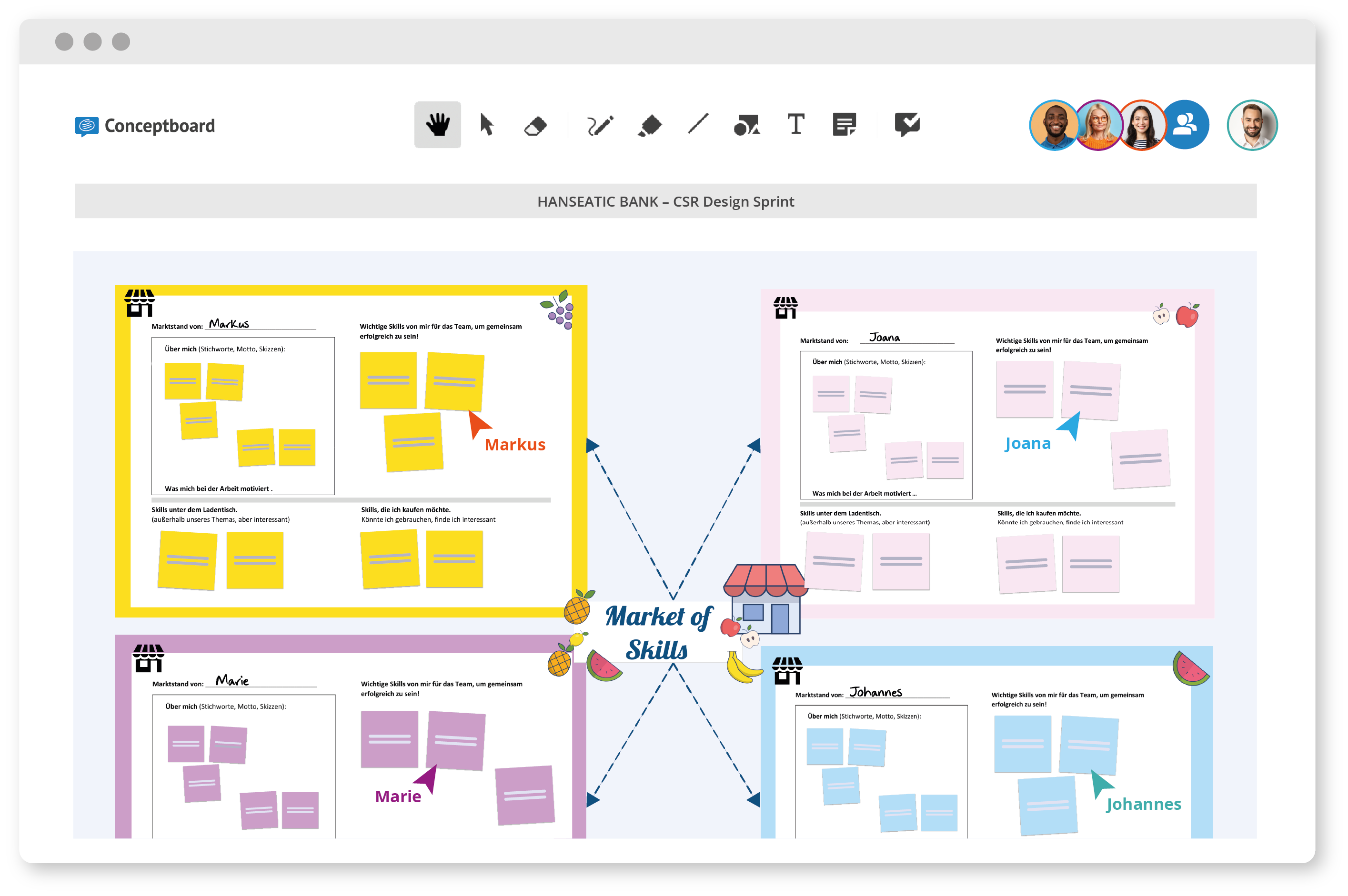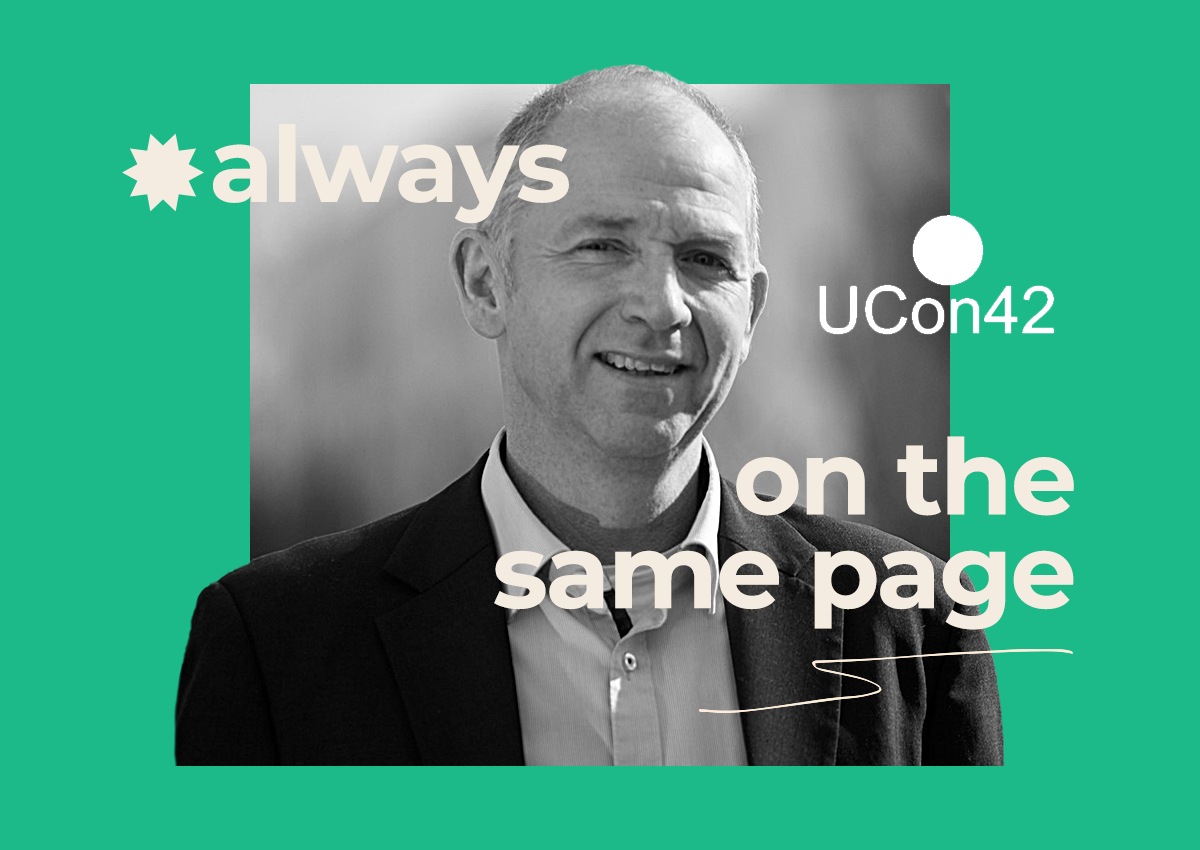This post is also available in: German
In the dynamic context of advancing digitisation and ever-changing customer needs, agile transformation has played a central role in the corporate world. Since 2016, Hanseatic Bank has been on a consistent path towards agility. This process has been characterised not only by organisational changes but also by a fundamental shift in the thinking and actions of over 550 employees – the so-called agile mindset.
One important tool among the agile methodologies for Hanseatic Bank is Design Thinking. Design Thinking is an innovative and creative process aimed at putting customer needs at the forefront. This approach enables the development of innovative solutions to problems and the offering of products or services tailored precisely to the desires and requirements of the target audience. Consequently, and due to collaboration in cross-functional teams, as is the case at Hanseatic Bank, the likelihood of success for new ideas significantly increases. The method of Design Thinking is implemented in the form of Design Sprints. Comprising six phases, the ideal outcome of a Design Sprint is a tangible representation of an idea, commonly referred to as a prototype.
Claudia Andresen, Agile Coach at Hanseatic Bank, shows us how Conceptboard, as a visual collaboration tool, supports the execution of a remote Design Sprint and significantly influences the quality of the final outcome.
Successfully Conducting Design Sprints in a Hybrid Work Environment
Amid the challenges of remote work and the limitations imposed by the Covid-19 pandemic, Claudia Andresen, Agile Coach at Hanseatic Bank, faced the task of guiding a cross-functional team in developing a prototype for a new product. The challenge was to find a solution to overcome the spatial barriers between participants while creating a lively, creative, and interactive atmosphere for the Design Sprint.
How does a Design Sprint work?
A Design Sprint consists of six phases: understanding the problem, building empathy towards customer needs, synthesising all gathered information, and developing ideas based on these insights. In the fifth step, a prototype is created – a tangible representation of the idea – to gather feedback from potential users in the final step.
What is Prototyping?
Prototyping is a particularly important phase in the Design Sprint. By creating a prototype, an idea can be quickly visualised, making it easy to understand. Various forms of prototypes can be used, from tangible prototypes made of materials like clay or Lego to digital representations using mock-ups or websites. After completion, the prototype is presented to the target audience, and their feedback is collected. At the end of the Design Sprint, there is a validated prototype that serves as a solid foundation for further product or service development.
Conceptboard Creates an Interactive Atmosphere During the Design Sprint
Design Sprints typically span several days, leading to an intense and information-rich working atmosphere. Collaboration tools create transparency and provide participants with a better overview of requirements and content developed. Conceptboard proved to be an ideal solution for this purpose.
The online whiteboard offers essential features for natural interaction during a workshop:
- Real-time collaboration, regardless of location and time.
- Use of drawing tools such as digital sticky notes, shapes, icons, and building blocks for visualising ideas.
- Persistent availability of content and the option to download.
- Structured work through section division.
- Live moderation for easy workshop facilitation.
However, a fundamental criterion for this decision was data privacy. For Hanseatic Bank, it was important to find a solution that ensured comprehensive data protection through hosting in Germany. Conceptboard met this crucial criterion, ensuring not only a successful but also a secure Design Sprint.
Design Sprint Process with Conceptboard
To prepare for the Design Sprint accordingly, Claudia Andresen used various drawing tools and pre-made templates from Conceptboard to make the workshop engaging and divide it into meaningful sections.
The Design Sprint workshop began with an introductory round called the “Market of Skills,” allowing team members to get to know each other better and define roles during the Design Sprint. Thanks to Conceptboard, all participants quickly uploaded their pictures to the board.
Once everyone had filled out their profiles, it was easy to see who possessed which skills and, therefore, assumed the appropriate role.

Through playful activities like the scenario “How to make a toast,” participants became familiar with the methodology of Design Sprints and quickly learned the basic functions of Conceptboard: placing text and sticky notes, as well as inserting icons or images.
For Claudia Andresen, using Conceptboard means both ease and acceleration: “Conceptboard helps me make the process transparent and clear for myself and all participants. This way, the goals are clear, and we can focus better.”
Efficiently and Successfully Creating a Product Prototype with Conceptboard
The benefits of Conceptboard became apparent in its usage. Conceptboard’s intuitive interface allowed every team member to seamlessly integrate into the process and focus on the “what” rather than the “how.” Additionally, dividing the board’s content into sections helped provide structure and organisation to manage the vast amount of information, allowing everyone to review and internalise the results afterward.
The use of Conceptboard supported the concentration of participants during the Design Sprint and enabled them to work on tasks more efficiently than in an in-person workshop.
The online whiteboard not only provided a framework for purely digital collaboration but also integrated elements of the analog world such as photos and videos, leading to a diverse and dynamic experience. This combination of digital and analog efficiency contributed to a high-quality workshop experience and outcome.
Even after the conclusion of the Design Sprint, the board continued to be valuable. It allowed the prototype to be presented within the company without much effort, as everything was already on the board. Moreover, there were no additional tasks for documenting and recording, saving valuable time and resources.
„Despite the abundance of information, a coherent overall picture emerges on the board at the end of the day. This provides a solid foundation and a clear direction for the next steps. The use of Conceptboard leads to a more comprehensive and advanced development as well as a higher quality of the product prototype.” Claudia Andresen, Agile Coach at Hanseatic Bank.
Where is Conceptboard Used at Hanseatic Bank?
In addition to its use in Design Sprints and other workshops, Hanseatic Bank utilises Conceptboard for a variety of other collaborative projects and use cases. Before the introduction of Conceptboard, kick-off events, for example, required a lot of time and organisational effort. With Conceptboard, the preparation and participation in these events were simplified, the time investment reduced, and the documentation quality improved.
Conceptboard has gained popularity among all employees who want to improve processes and bring about changes together. Whether Product Owners, Project Managers, Team Leaders, or even Department Heads, Conceptboard is used in various areas.
Nowadays, the collaboration tool is an integral part of Hanseatic Bank. New employees learn how the online whiteboard works and how to use it during the onboarding process. Additionally, they are educated on what to consider when placing personal data on a board.
Conceptboard is Changing the Culture of Collaboration
Through the implementation of Conceptboard, the culture of collaboration and innovation at the company has been maintained and further developed even during the pandemic. Seamless collaboration in a hybrid work environment, the ability to integrate various media, and increased efficiency in meetings have led to sustainable success.
Hanseatic Bank values Conceptboard as an efficient collaboration tool that enables employees to work in a modern and sustainable manner.
If you want to discover more about how Conceptboard has empowered other organisations to boost productivity and efficiency, explore our customer success stories.




